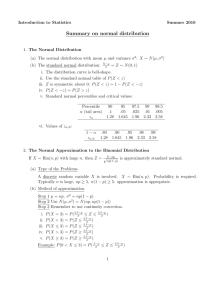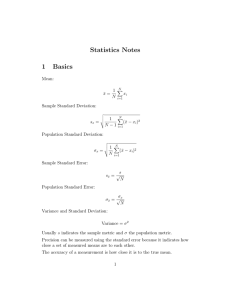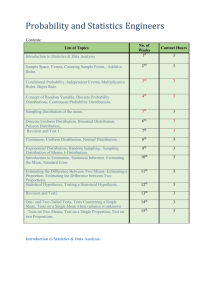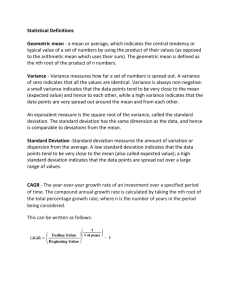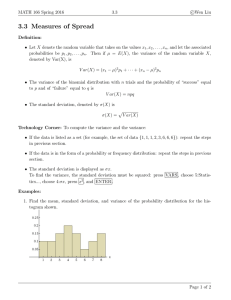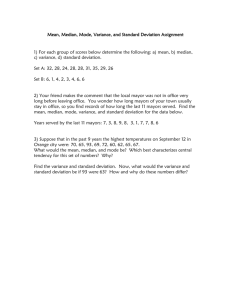Normal distribution, Mean & Standard deviation
advertisement
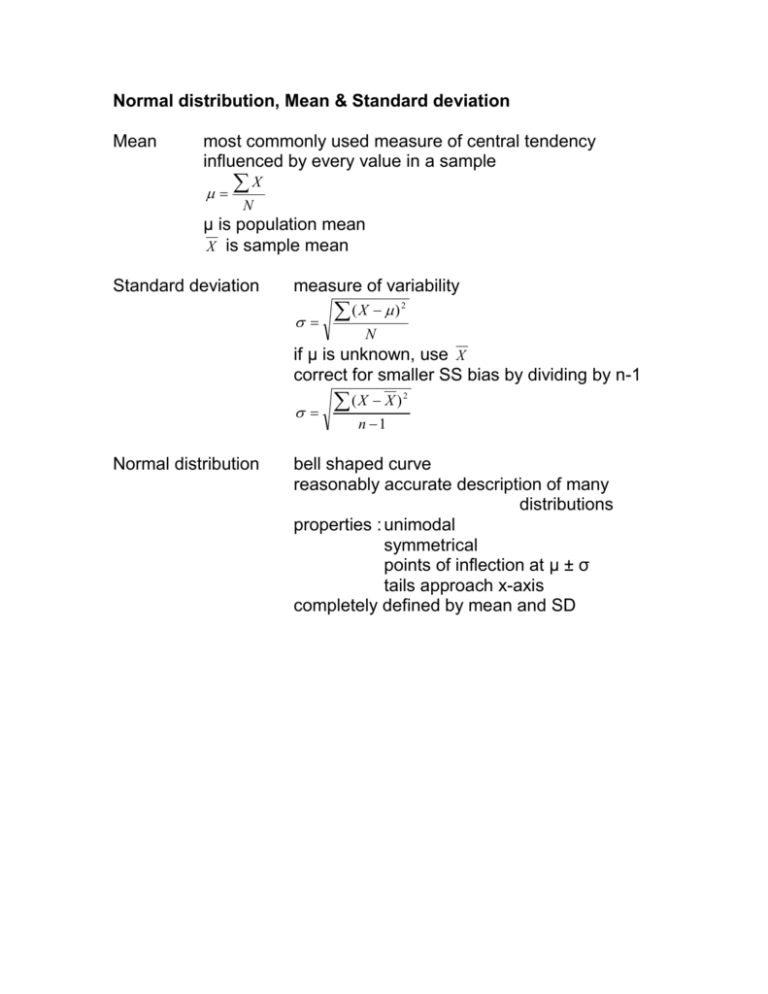
Normal distribution, Mean & Standard deviation Mean most commonly used measure of central tendency influenced by every value in a sample X N µ is population mean X is sample mean Standard deviation measure of variability (X ) 2 N if µ is unknown, use X correct for smaller SS bias by dividing by n-1 Normal distribution (X X ) 2 n 1 bell shaped curve reasonably accurate description of many distributions properties : unimodal symmetrical points of inflection at µ ± σ tails approach x-axis completely defined by mean and SD Sampling & population inference population sample entire collection of units of interest collection of observations from a well defined population random sample each unit in a population has an equal chance of being sampled and each unit is independent of each other population inference to form a conclusion about a population from a sample central limit theorem distribution of random samples of mean tends towards a normal distribution, even if parent population isn’t normal normal distribution is model for distribution of sample stats approximation to normal distribution improves as n increases standard error of mean standard deviation of sampling error of different samples of a given sample size how great is sampling error of ( X - µ) as n increases, variability decreases X n z, t & F distributions hypothesis testing: often want to know the likelihood that a given sample has come from a population with known characteristic(s) 1. define H0 2. test likelihood of H0 z X X normal distribution with mean 0, standard deviation 1 (cf central limit theorem) e.g. X = 104.0 H0 : µ = 100 X= 3 z = (104 – 100) / 3 = 1.33 α = 0.05 therefore retain H0 t X sX for a given mean and sd, normal distribution is completely defined there are a family of t curves, depending on degrees of freedom n – 1 degrees of freedom associated with deviations from a single mean with infinite degrees of freedom, t = z H0 : µ = 100 X = 120 n = 25 sx = 35.5 sX t sx n 35.5 25 7.1 X 120 100 2.82 sX 7.1 df = 24 α = 0.05 tcrit = 2.06 therefore reject H0 t values may be converted to z values via p values Analysis of variance SStotal = SSwithin + SSbetween dfwithin = ntotal – k dfbetween = k – 1 Within-groups variance estimate: SS w df w s w2 (‘mean square within’) estimates inherent variance Between-groups variance estimate: 2 sbet SS bet df bet (‘mean square between’) estimates inherent variance + treatment effect F 2 sbet s w2

